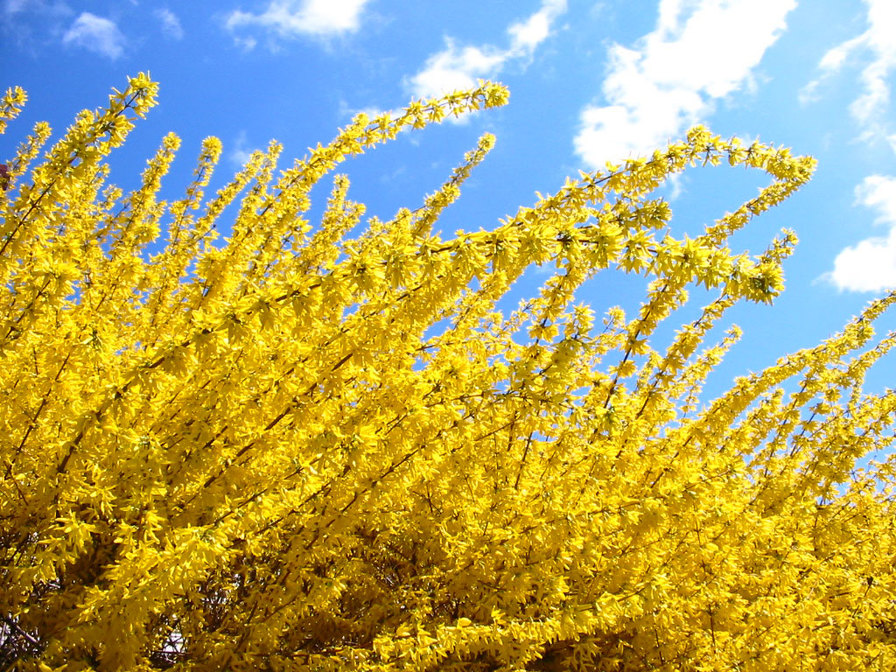May 2016
Molly Peacock
molly@mollypeacock.org
molly@mollypeacock.org
This heroic sonnet isn't directly about a flower, but it swirls around the central image of the title, a flourish of spring forsythia. To me, it's a May poem, though in many places forsythia blooms as early as February. I was born in Buffalo, though, and now live in Toronto, where forsythia can burst as late as May, even in a globally warmed world. I've written lots about flowers, not only in poetry, but in biography with The Paper Garden: Mrs. Delany Begins Her Life's Work at 72 (about the 18th-century botanical collage artist) and now with The Rose Artist, Her Husband and Her Friend, a biography I'm still working on, about the 19th-century American-Canadian painter, Mary Hiester Reid. Sonnets seem like flowers to me, whorling out (or should I say springing?) from the stem of an idea in a quick bloom of fourteen (or in this case, sixteen) lines. "Forsythia Below Clouds" is from Cornucopia: New & Selected Poems (W.W. Norton and Company). Please visit my website: http://mollypeacock.org/
Forsythia below Clouds
What chases spring? Almost anything.
Wind chases it into place, of course, every
chance it gets. Pennies in a pocket, jingling
forgotten in a cotton jacket chase it. Shivery
afternoons chasing dusk chase spring. The yawns
of a million people each act as a million
miniature bellows blowing ninety downs
into bloom, and each dawn catches the loose pollen
of spring in its pastel cup. Winter chases
spring into place like an aging annoyed
Angora cuffs its offspring. It erases
anything cosy. Spring is a colder void,
actually, because of its light. Getting
ready, chasing things away by chasing
them into place, involves cold, light erasing.
Spring is a way of embracing forgetting.
-from Cornucopia: New & Selected Poems, W.W. Norton and Company
Author's Note: Will definitive proof that some prehistoric painters were women come when we find cave images of flowers? (Some anthropologists think that the hand stencils that look like clusters of blooms at the El Castillo Caves in Cantabria are by women http://news.nationalgeographic.com/news/2013/10/131008-women-handprints-oldest-neolithic-cave-art/) The core connection between flowering and the feminine seems everlastingly vital.
©2016 Molly Peacock

